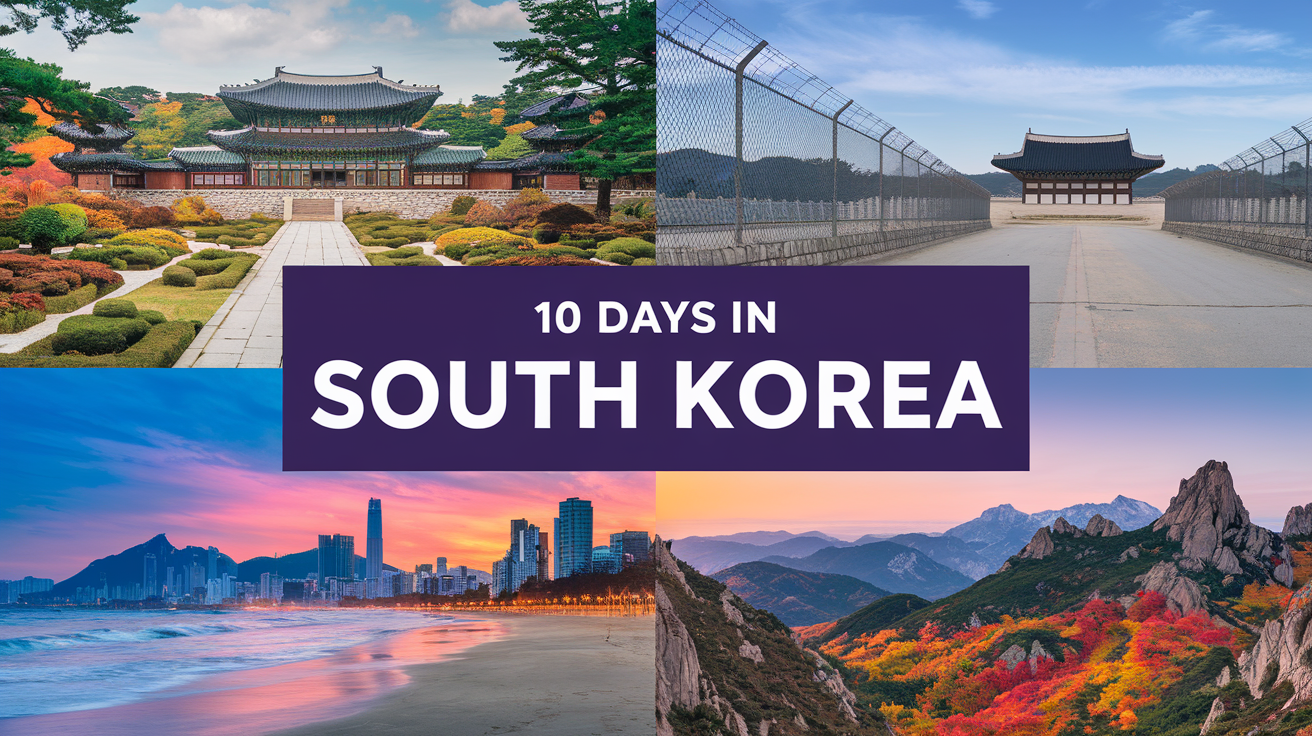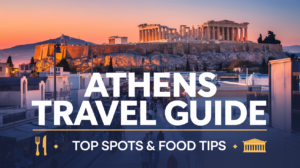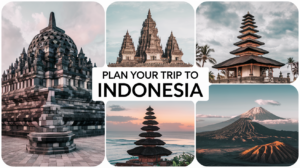South Korea is a land of contrasts where ultra-modern cities meet ancient temples, where street food markets buzz with energy, and natural wonders await exploration. Whether you’re exploring Seoul’s dynamic streets, relaxing on Jeju Island, or visiting the serene temples of Gyeongju, this 10-day itinerary will ensure you experience the best South Korea has to offer. Here’s your detailed, day-by-day guide to planning an unforgettable trip to South Korea!
Day 1-3: Seoul – A Modern City with Ancient Charm
Why Visit?
Seoul is the beating heart of South Korea, offering a mix of ancient palaces, skyscrapers, shopping, and some of the world’s best food.
Top Attractions
1. Gyeongbokgung Palace
– Why Famous: The largest of the Five Grand Palaces of the Joseon Dynasty. Don’t miss the Changing of the Guard Ceremony!
– Google Maps: Gyeongbokgung Palace
– Opening Times: 9:00 AM–5:00 PM (Closed Tuesdays).
– Tickets: ₩3,000 ($2.50 USD) or free with the Combination Palace Pass (₩10,000).
2. Bukchon Hanok Village
– Why Famous: A picturesque neighborhood with traditional Korean houses (hanoks).
– Tip: Rent a hanbok (traditional dress) for photos and discounts at cultural sites.
3. Namsan Seoul Tower (N Seoul Tower)
– Why Famous: Offers panoramic views of the city, especially beautiful at night.
– Tickets: ₩16,000 ($12 USD) for the observatory.
4. Myeongdong Shopping Street
– Why Famous: A haven for shopping and street food like tteokbokki (spicy rice cakes) and hotteok (sweet pancakes).
5. Dongdaemun Design Plaza (DDP)
– Why Famous: A futuristic architectural marvel and shopping district.
Dining Recommendations in Seoul
Gwangjang Market: Try *bindaetteok* (mung bean pancakes) and *mayak kimbap* (seaweed rolls).
Korean BBQ: Visit Mapo Sutbul Galbi for top-notch grilled meat.
Day 4: DMZ Tour – A Unique Historical Experience
Why Visit?
The DMZ (Demilitarized Zone) offers a rare and sobering glimpse into the division between North and South Korea.
What to See:
– *Third Infiltration Tunnel*: A tunnel dug by North Korea.
– *Dora Observatory*: View North Korea through binoculars.
– *Joint Security Area (JSA)*: Where North and South Korean soldiers stand face to face.
Tour Options: Guided tours are required. Book with companies like Koridoor Tours or Viator.
Tickets: $50–$100 USD depending on the package.
Tip: Bring your passport as security checks are mandatory.
Day 5-6: Busan – Coastal Beauty and Bustling Markets
Why Visit?
Busan is famous for its beautiful beaches, vibrant markets, and temples set amidst stunning natural scenery.
Top Attractions
1. Haeundae Beach
– Why Famous: Busan’s most popular beach with cafes, nightlife, and watersports.
2. Gamcheon Culture Village
– Why Famous: A colorful hillside village filled with murals, art, and winding streets.
– Google Maps: Gamcheon Culture Village.
3. Jagalchi Fish Market
– Why Famous: South Korea’s largest seafood market, where you can pick fresh fish and have it cooked on-site.
4. Haedong Yonggungsa Temple
– Why Famous: A stunning seaside temple perched on rocky cliffs.
Dining Recommendations in Busan
Ssiat Hotteok: A Busan specialty (sweet pancake with seeds).
Haeundae Market: Try fresh seafood and *eomuk* (fish cake skewers).
Day 7: Gyeongju – The Ancient Capital of Korea
Why Visit?
Gyeongju is often called the “museum without walls” because of its abundance of historical landmarks.
Top Attractions
1. Bulguksa Temple
– Why Famous: A UNESCO World Heritage Site known for its stunning Buddhist architecture.
– Google Maps: Bulguksa Temple.
– Tickets: ₩6,000 ($5 USD).
2. Cheomseongdae Observatory
– Why Famous: The oldest surviving astronomical observatory in Asia.
3. Donggung Palace and Wolji Pond
– Why Famous: A picturesque palace reflecting beautifully on the pond at night.
Dining Recommendations in Gyeongju
Hwangnam Bread: Famous sweet bread filled with red bean paste.
Gyeongju Ssambap: Traditional Korean meal with rice, vegetables, and meat.
Day 8-9: Jeju Island – Natural Wonders and Volcanic Landscapes
Why Visit?
Jeju Island, a UNESCO World Heritage Site, is known for its volcanic landscapes, beaches, and natural beauty.
Top Attractions
1. Seongsan Ilchulbong (Sunrise Peak)
– Why Famous: A volcanic crater offering breathtaking sunrise views.
– Tickets: ₩5,000 ($4 USD).
2. Manjanggul Cave
– Why Famous: A vast lava tunnel showcasing volcanic formations.
– Tickets: ₩4,000 ($3 USD).
3. Jeongbang Waterfall
– Why Famous: One of the few waterfalls in the world that flows directly into the sea.
4. Hallasan Mountain
– Why Famous: South Korea’s tallest mountain with scenic hiking trails.
Dining Recommendations in Jeju
Jeju Black Pork BBQ: Try it at restaurants like Donsadon.
Tangerines: Juicy and sweet local specialty.
Day 10: Return to Seoul for Shopping and Departure
Spend your final day shopping in Seoul’s popular districts:
– Insadong: For souvenirs and traditional crafts.
– Hongdae: Trendy shops, cafes, and youthful energy.
– Dongdaemun: Massive shopping malls for fashion lovers.
Transportation in South Korea
1. Korea Rail Pass (KR Pass)
– Cost-effective for unlimited KTX (bullet train) travel. Book online at KORAIL.
2. T-Money Card
– A rechargeable card for buses, subways, and taxis in major cities.
3. Flights
– Domestic flights are efficient for reaching Jeju Island. Airlines like Jeju Air and Korean Air are great options.
Budget Breakdown
Accommodation: $40–$150 USD per night (budget to mid-range).
Meals: $15–$30 USD per day.
Transportation: $200–$300 USD for 10 days (including passes).
Attractions: $100–$150 USD for entrance fees and tours.
Final Tips for Traveling in South Korea
1. Learn Basic Korean Phrases: “Annyeonghaseyo” (Hello), “Kamsahamnida” (Thank you).
2. Stay Connected: Rent a pocket Wi-Fi or purchase a SIM card.
3. Cash and Cards: Credit cards are widely accepted, but carry cash for small vendors.
4. Cultural Respect: Remove shoes when entering traditional homes or temples.
Conclusion
This 10-day itinerary covers the best of South Korea: from Seoul’s vibrant city life to the historic sites of Gyeongju and the natural beauty of Jeju Island. Follow this guide to experience the perfect mix of culture, food, and adventure.
Call-to-Action:
Have you visited South Korea, or is it on your bucket list? Share your thoughts or questions in the comments below, and subscribe for more travel guides!




